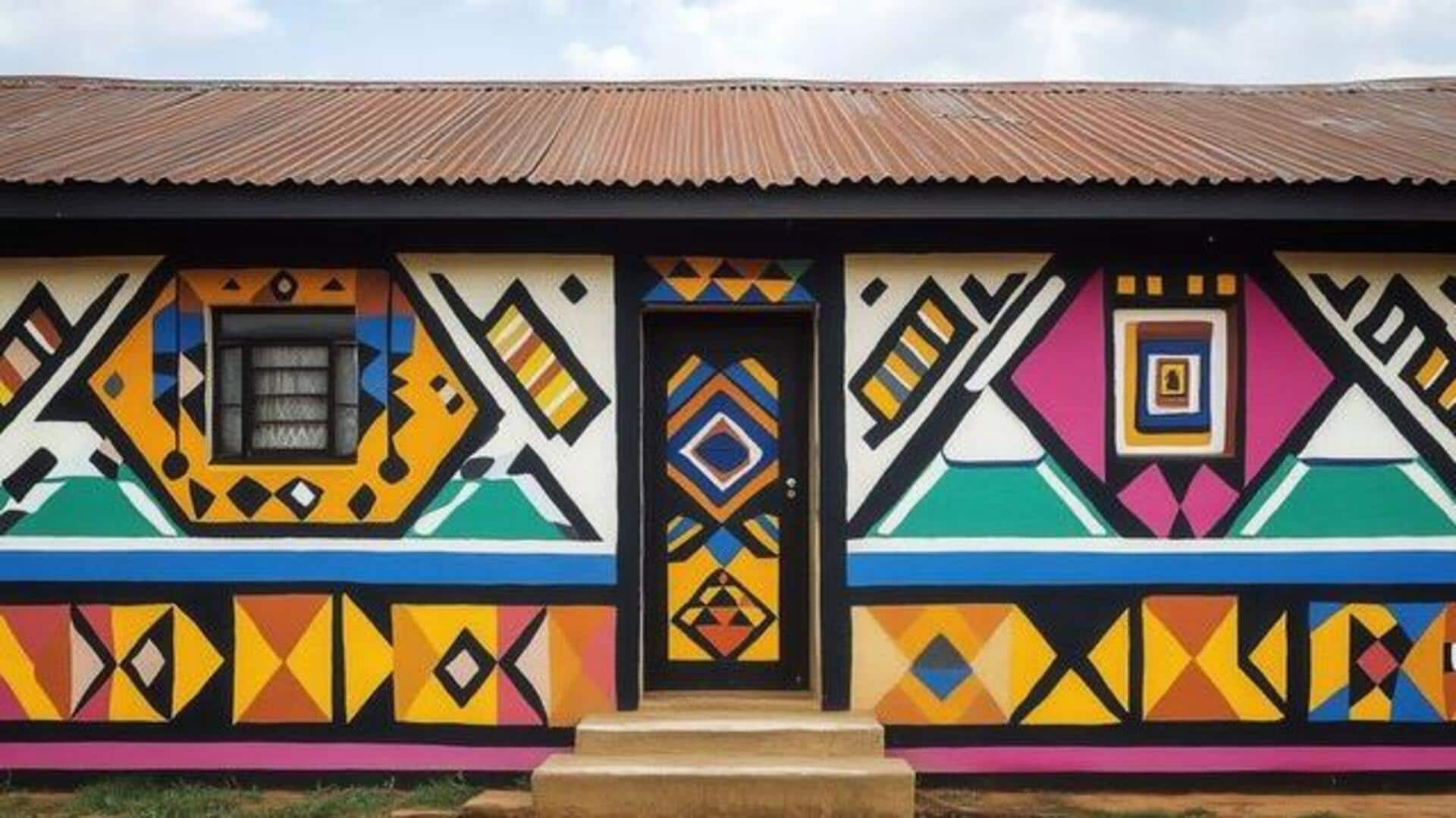
All about Ndebele murals
What's the story
Traditionally painted by Ndebele women, the vibrant Ndebele murals of South Africa are characterized by their bold geometric patterns and vivid colors. However, these artworks are more than just pretty facades; they are a form of communication and cultural expression, passed down through generations. Each mural reflects personal experiences or societal events, offering insight into the Ndebele people's rich heritage.
Design elements
Geometric patterns and symbolism
Ndebele murals are defined by their elaborate geometric patterns. These patterns are not just for decoration; they are symbolic and convey messages about family values, social status, or historical events. From triangles to squares and lines, the choice of shape is intentional. Each shape and color combination is deliberately chosen to symbolize particular ideas or emotions, making each mural unique in its tale.
Color techniques
Use of natural pigments
Traditionally, Ndebele artists relied on natural pigments from locally sourced materials to achieve their stunning colors. Clay earths supplied reds and browns, while the greens and yellows came from plants. Not only did this practice root the art to its surrounding, but it also promoted sustainability in terms of material usage. Today, although some artists may use modern paints for longevity, many still stick to tradition to maintain authenticity.
Artistic tradition
Role of women in mural creation
The art of creating Ndebele murals is largely a female-dominated practice in the community. Women are tasked with painting these colorful, expressive murals on the exteriors of their homes during important life events, like weddings or births. This responsibility makes women the torchbearers of cultural heritage, while giving them an opportunity to showcase their personality through art.
Contemporary adaptations
Evolution with modern influences
While deeply rooted in tradition, Ndebele mural art has also transformed through the ages. Modern influences help shape new expressions within this cultural practice. Some contemporary artists merge traditional motifs with modern themes or techniques. They appeal to larger audiences while not losing the cultural essence. This evolution reflects the adaptability within tradition. It ensures that it remains relevant across generations.